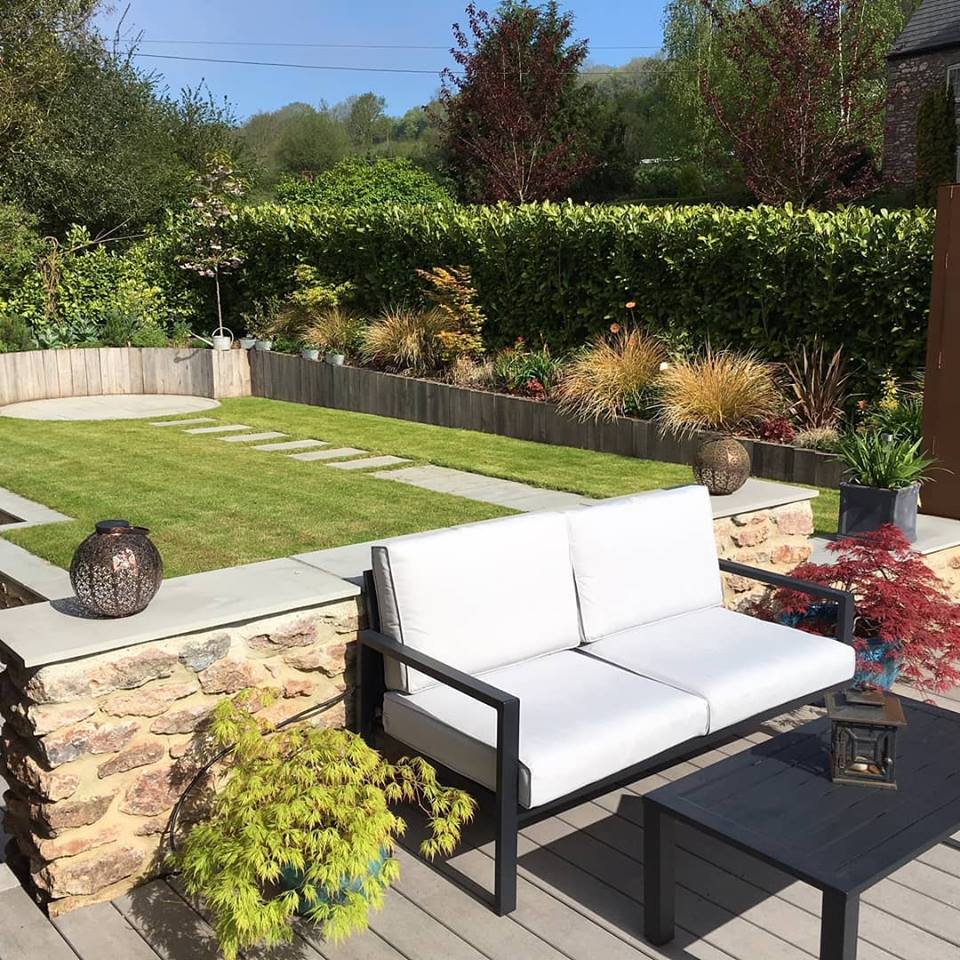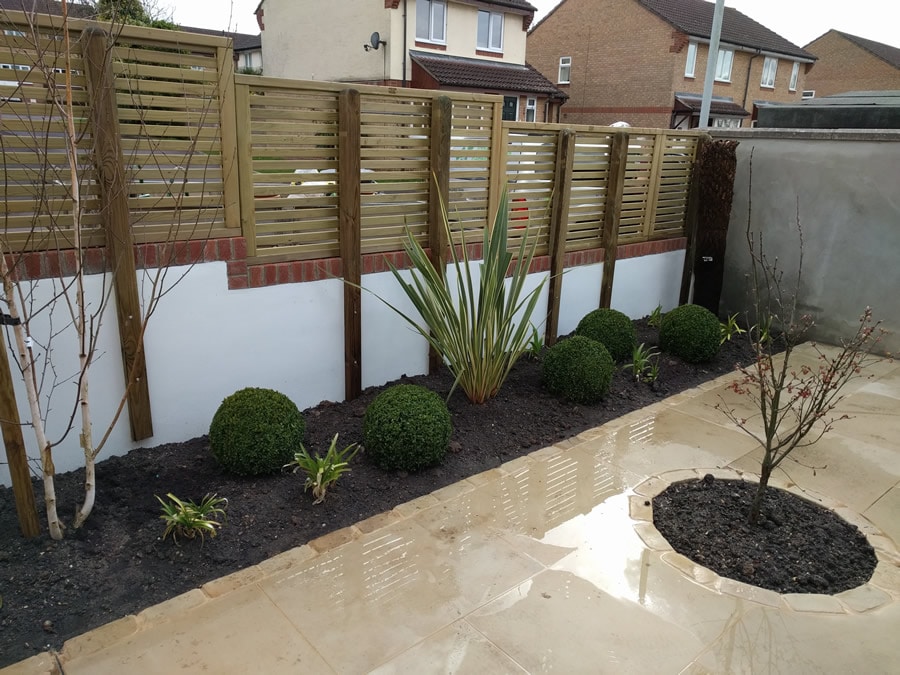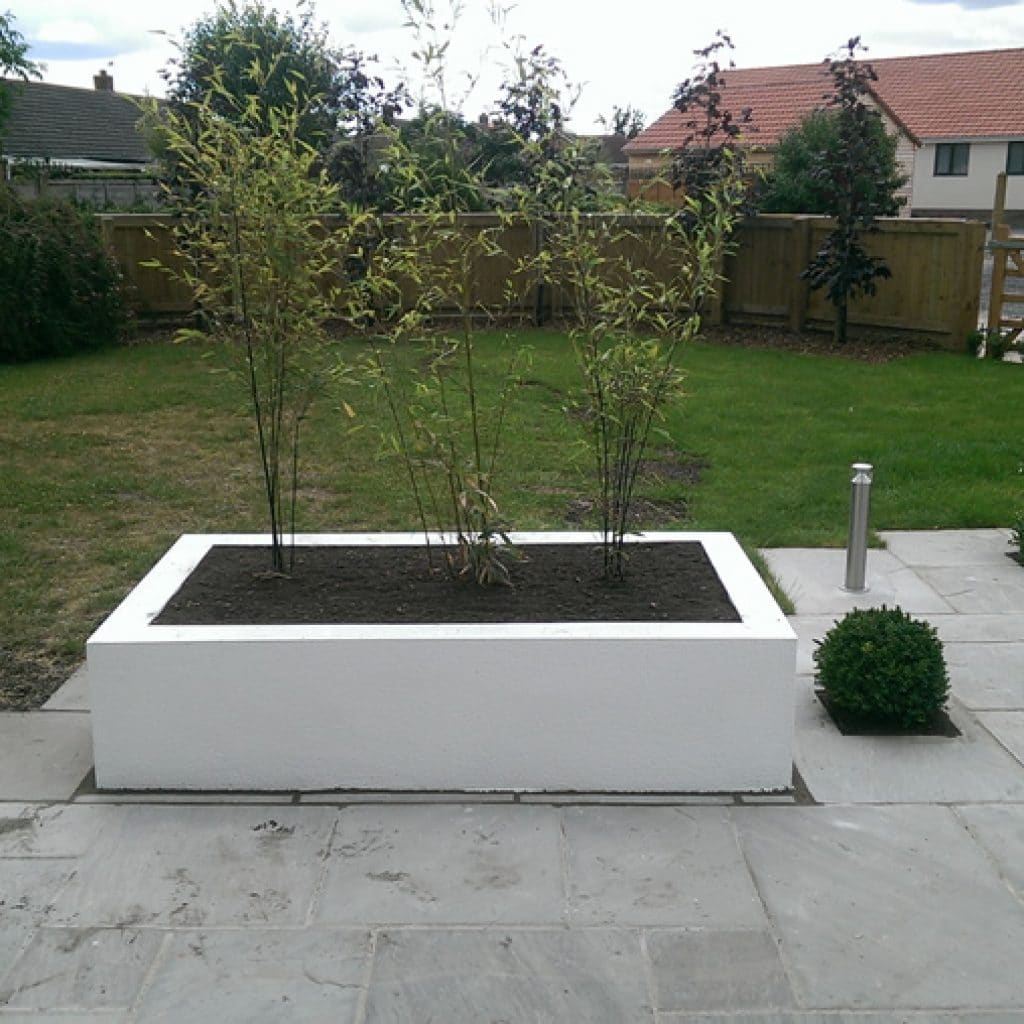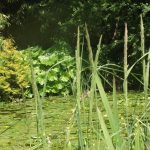Landscaping to block noise
Good landscaping solves problems and one common problem in urban gardens is noise pollution. Here’s how to use landscaping to block noise.
A well landscaped garden will be attractive to all five senses. Sight, scent, touch, taste and noise. Noise can be a tricky one to deal with if it’s coming from beyond the boundaries of the garden. While we can use screening and trickery to fool the eye – the ears are not so easily distracted. And I’m yet to meet anyone who enjoys sitting in their garden listening to the traffic on the A372.
Landscapers and garden designers do have a few tools in our arsenal to help ameliorate noise. Let’s take a look.
Absorbing or muffling sounds
Ever wondered why motorways tend to have banks, trees and bushes beside them? It’s not just about prettiness, wildlife or pollution, they are all there to absorb noise. The science behind the idea suggests that sound waves find their way into the features and are absorbed by them. A big bank of soil isn’t practical for most gardens. But hedges are! Growing a tall, densely planted hedge between your garden and the source of the sound will definitely cut out some of the noise.

The laurel hedge in this Rodney Stoke garden not only protects the garden from prying eyes – it helps to keep unwanted noises out too
For your shed or summerhouse, a living green roof will do a stirling job of absorbing noise. AND it works both ways – you can play your Guns n Roses CD in your shed and the green roof will deprive your neighbours of your wonderful voice as you belt out the lyrics to Sweet Child of Mine.
Reflecting the sound away from the garden
Sound travels in waves in the same way as light. We’re all very familiar with the idea of reflecting light (think blacked out limousine windows), but did you know you can reflect sound too?
To reflect sound you need a solid barrier with a relatively smooth surface. A glass balustrade would do it, or a wall clad in porcelain.
Sound deflection
Deflection is a trick we use to muffle and distort the sound. Landscaping needs to consider lots of very different factors. Aesthetics of course, but also the strength and direction of the prevailing wind, light and shade, the client’s budget and building materials in the surrounding area. A chunky big hedge or a wall are simply not the right noise protectors for every garden.
Deflection places a barrier between the source of the sound and the listener, but it’s not a solid barrier. I’ve been looking online for a picture to illustrate it but so far I’ve failed. I suppose one analogy would be a hosepipe. Water would normally flow freely from the end in a strong, concentrated stream. Put a sprinkler attachment on and instead of a strong stream you get a fine spray.
We can do a similar thing with sound by using trellis, decorative screens or slatted fences. They all make the sound less obtrusive.

A high solid wall would make this garden feel dark and oppressive.
We’ve compromised and used a mid-height wall with a laterally slatted fence to help reduce noise from the adjacent parking area
Sound refraction
Using the same principal as deflection, noise refraction sends those sound waves pinging about in random directions. It’s the equivalent of light bouncing off a well cut diamond.
For sound refraction landscapers and garden designers would use climbing plants or angled surfaces to confuse the sound waves.
Offer alternative noises
Just as it is possible to distract the eye away from ugly features, garden designers can find all sorts of ways to help your ears concentrate on good sounds and block out the annoying ones.
The human brain is a clever machine. It is constantly processing information from our surroundings, but it only makes us aware of a very tiny percentage of what it knows. For example, how is your little toe right now? I’ll wager you hadn’t even thought about it until you read that. Your brain though, knows exactly how warm/cool/wet/dry that toe is 24 hours a day. It just doesn’t tell you unless it thinks there’s something amiss.

Bamboos make a wonderfully soothing sound as the breeze rustles through them. They can be quite invasive so be sure to encase those roots in a good strong container.
If then, you can give your brain some nice sounds to tell you about, there’s a good chance it will not point out the traffic noise or the barking dog. So, fill your garden with birdsong or the sound of water trickling. Trust me, it will make you feel much better.
Hauser and Wirth Garden and Gallery has some wonderful sensory gardens where plants rustle and birds sing – very inspirational and worth a visit
For best results, combine several noise-busting methods
Whenever I am asked to use landscaping to block noise, I generally combine selected techniques to suit the garden and the source of the noise.
For example, I might put a laurel hedge beside the road; then for added protection in the seating area, I’ll install a pergola with climbing plants. Around the garden, and especially close to chairs and tables will be ornamental grasses that swish in the breeze. A natural lawn will help absorb unwanted sounds and some wildlife friendly tweaks will hopefully fill the garden with birdsong.
If noise is bugging you in your garden – don’t despair. These tips and tricks are tried and tested. If you some ideas to bring them together into a cohesive design, please don’t hesitate to get in touch. My garden design service is here to help.




